Southwest Michigan field crops update – July 21, 2022
The wide range of crop development in fields across the region will extend the scouting window for key pests and diseases in corn and soybean this year.

Weather
Temperatures this past week were normal on average in the southwest. We picked up 210 growing degree days (GDD, base 40 for alfalfa) or 140 GDD50 (for corn and soybean) this past week. The forecasted reference evapotranspiration (FRET) rate will be 1.3-1.5 inches this coming week. Daily FRET rates will be just over two-tenths of an inch at the end of this week but will drop to between 15-18 hundredths as temperatures drop slightly and relative humidity levels increase. The forecast predicts the addition of another 250 GDD40 or 180 GDD50 in the coming week. Both the 6-10 day and 8-14 day outlooks point to above-normal temperatures heading into August.
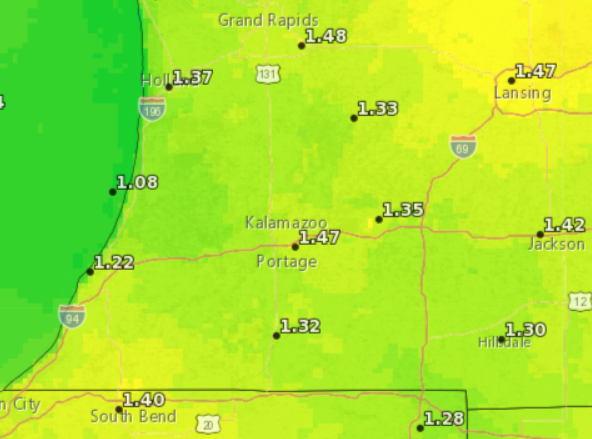
Precipitation was spotty this past week with some areas receiving an inch or less while select areas in Berrien and Calhoun counties received 2+ inches. Overall, the region has been very dry with most counties receiving 25-50% less rain than normal leading to a 0.5-2.0 inch deficit in the past two weeks. Our neighbors to the north are having a tougher time of it this summer as the entirety of central Michigan is in D1-D2 drought, having received 2-4 inches less rain than normal in the past 60 days. The forecast for the coming week is more hopeful with widespread rainfall expected over the weekend and again in the middle of next week with predicted totals of 0.75-1.5 inches. The medium-range outlooks call for slightly greater than average chances of precipitation as we finish up July and head into August.

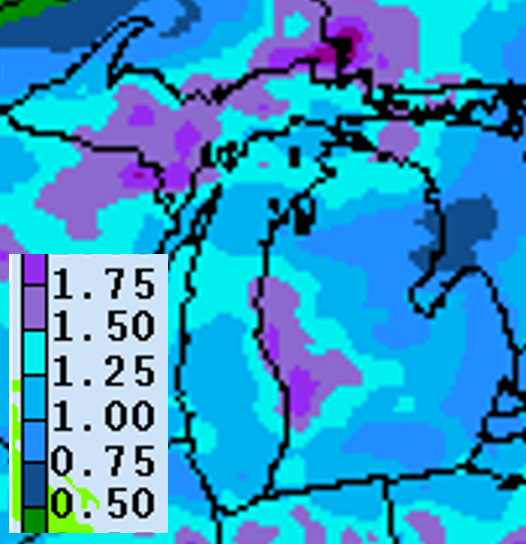
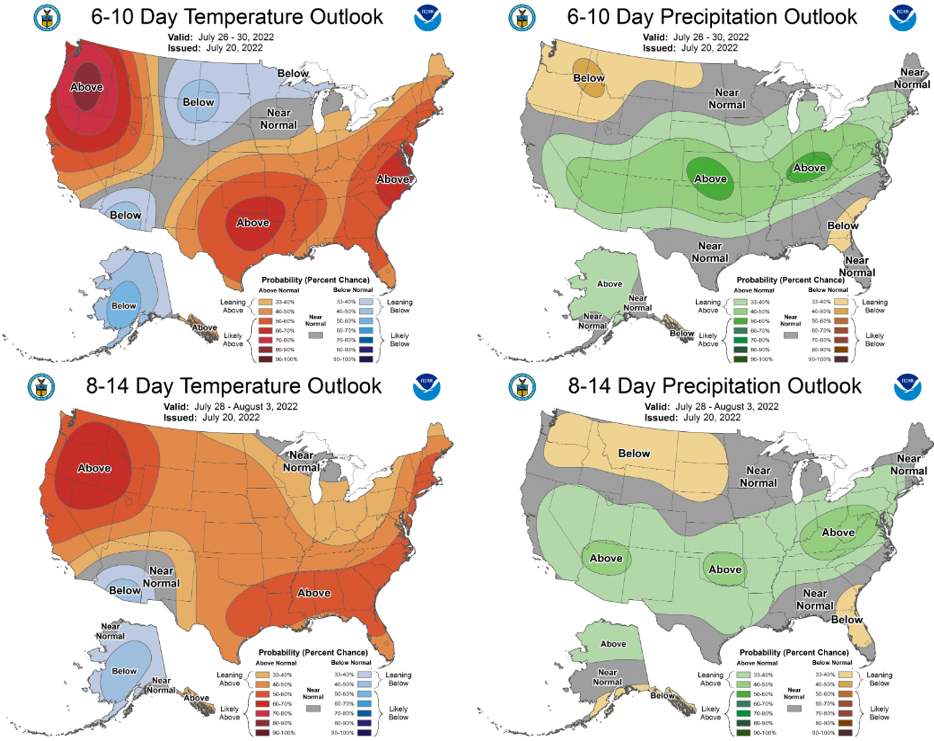
Crops and pests
Corn and soybean have held steady this past week with 67% and 60% of the crop rated good to excellent, respectively. The earliest corn fields are approaching brown silk (R2) while most are either just beginning to tassel or are still pre-tassel. With the wide range of development in fields across the region, monitoring for western bean cutworm (WBC) and scouting for egg masses and larval hatch will continue to be important through the rest of the month. Reports from around the state indicate tar spot incidence remains low, although most fields will be in the optimum window for a fungicide application in the next one to two weeks.
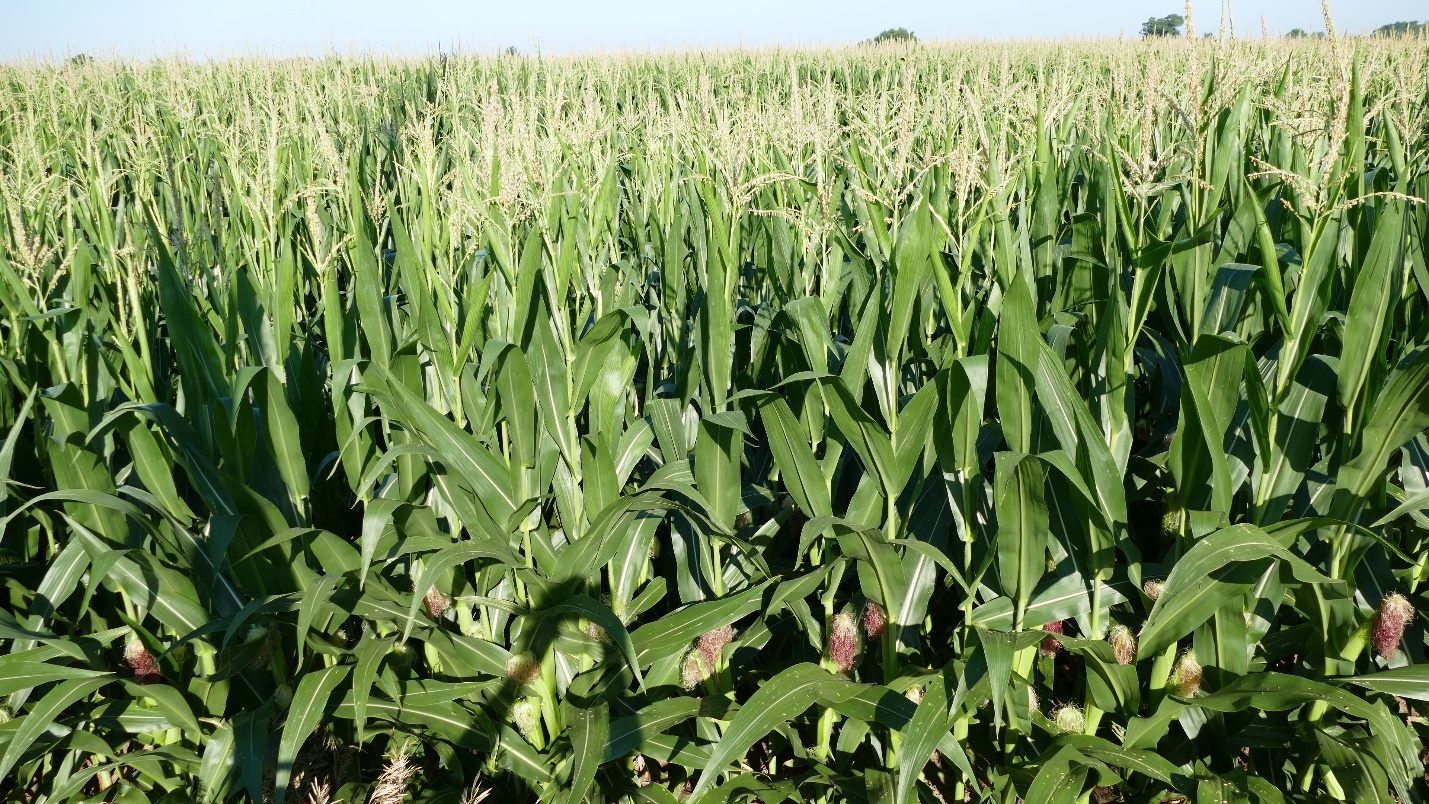
Soybean in most fields have reached full flower stage (R2, open flower at one of the two uppermost nodes) with pods forming at the base of many plants. No fields I have visited have reached the beginning pod growth stage (R3, 3/16 inch or longer appear at one of the four uppermost nodes) although it appears that earlier fields should be there by next week. Canopy closure is all over the map with later-planted fields in 15-inch rows and fields in 30-inch rows are just starting to canopy while those planted earlier or in tighter row spacing have already closed.
No signs of white mold have been found yet with the dry conditions. Septoria brown spot is often found in the lower canopy of soybean fields; however, yields are rarely affected by this disease, says Dean Malvick, Extension pathologist at the University of Minnesota. According to Loren Giesler, Extension plant pathologist with the University of Nebraska—Lincoln, yields can be decreased 8-15% on average across the U.S., and fields that are continuous soybean or are no-till are typically impacted the most. Endura will control both white mold and brown spot and Topguard will pick up a few other common soybean diseases. Consult the Crop Protection Network’s Fungicide Efficacy for Control of Soybean Foliar Diseases chart for more information.
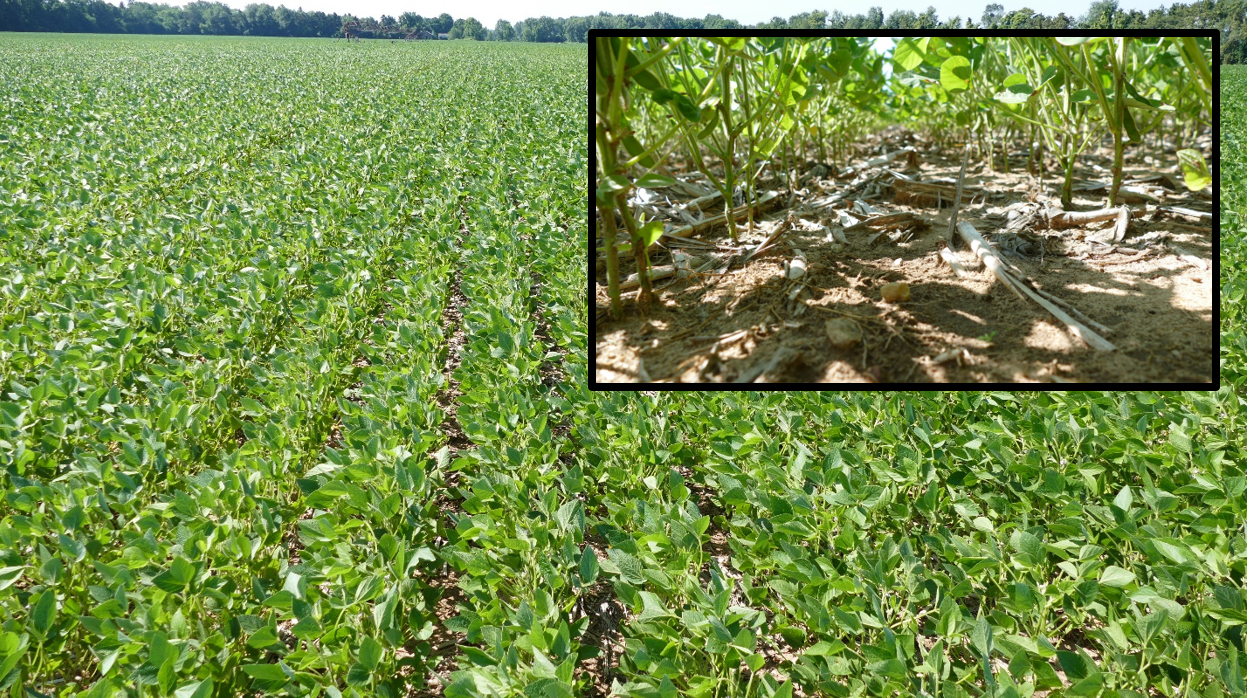
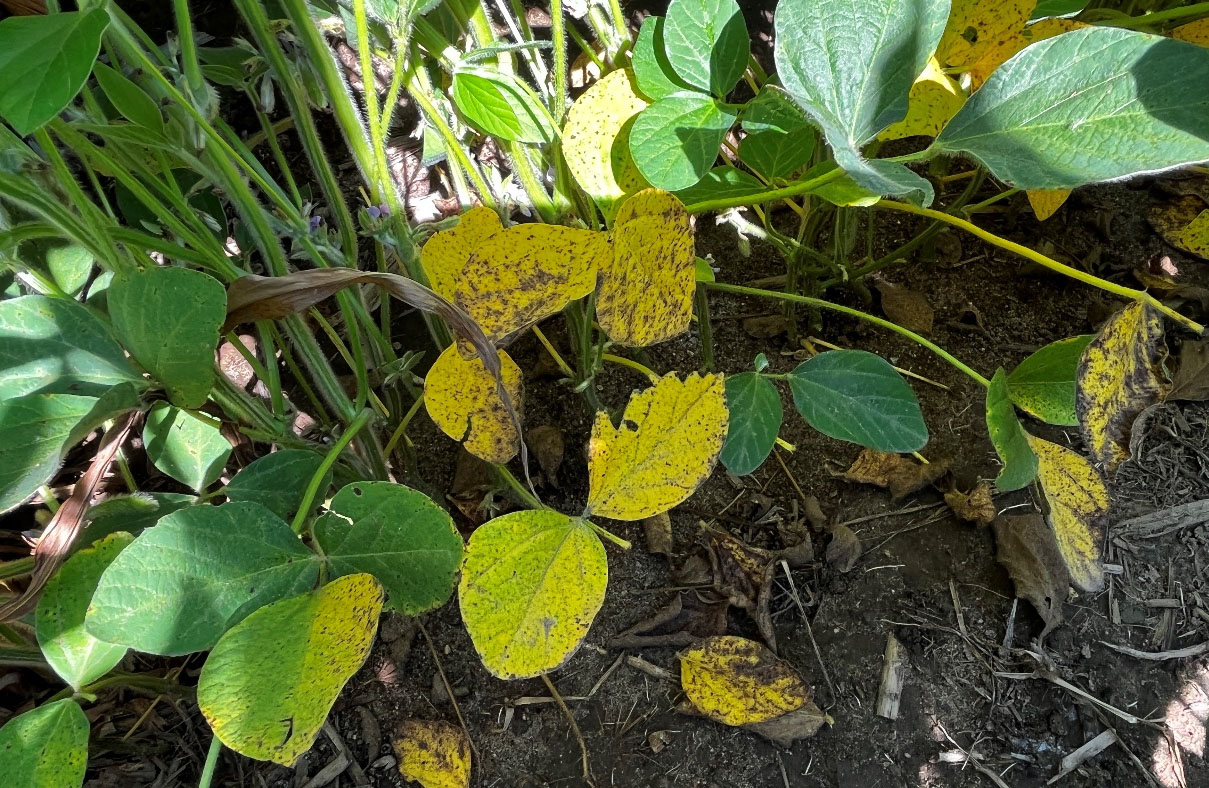
Weeds. Volunteer corn can be seen in numerous soybean fields this year, likely due in part to the higher cost of certain herbicides and the busy schedule earlier in the growing season with the compressed planting window. Corn can be problematic because it will compete with soybean for resources and act as a bridge for certain corn pests like corn rootworm that can feed on corn with sub-lethal levels of Bt. The University of Nebraska-Lincoln Extension wrote a comprehensive article, “Volunteer Corn in Soybean: Impact and Management,” that will be helpful for those dealing with this problem.
A South Dakota State University study where corn was allowed to compete for the entire growing season found that a density of 5,000 volunteers/acre (one plant per 3.5 feet of row) reduced soybean yield approximately 20% — a 12 bu/acre yield loss in 60 bu/acre soybean. Studies at the Universities of Minnesota and Illinois found that clumps of corn (seven to 10 plants per clump) reduced soybean yield 1% for every 75-115 clumps per acre. When deciding whether it is worth the addition of a post-grass herbicide to control volunteer corn with an early- or mid-post application, estimating the density of corn plants, using the estimates of yield impact from these studies, and taking into account the current price of corn and cost of the herbicide will help inform your decision.

Weed growth in many wheat fields has accelerated after harvest as full access to sunlight and other resources becomes available. Refer to the July 7, 2022 Southwest Michigan Field Crop Update for recommendations and resources for controlling annual weeds following wheat harvest. Side note: last week the USDA’s Risk Management Agency announced that all counties in the southern half of Michigan’s Lower Peninsula are now eligible for crop insurance when raising two crops on the same land in one year, allowing double cropping of soybeans following winter wheat harvest for crop year 2023 through a written agreement. Keep tabs on how soybean following wheat in the area is doing and consider this strategy for 2023.
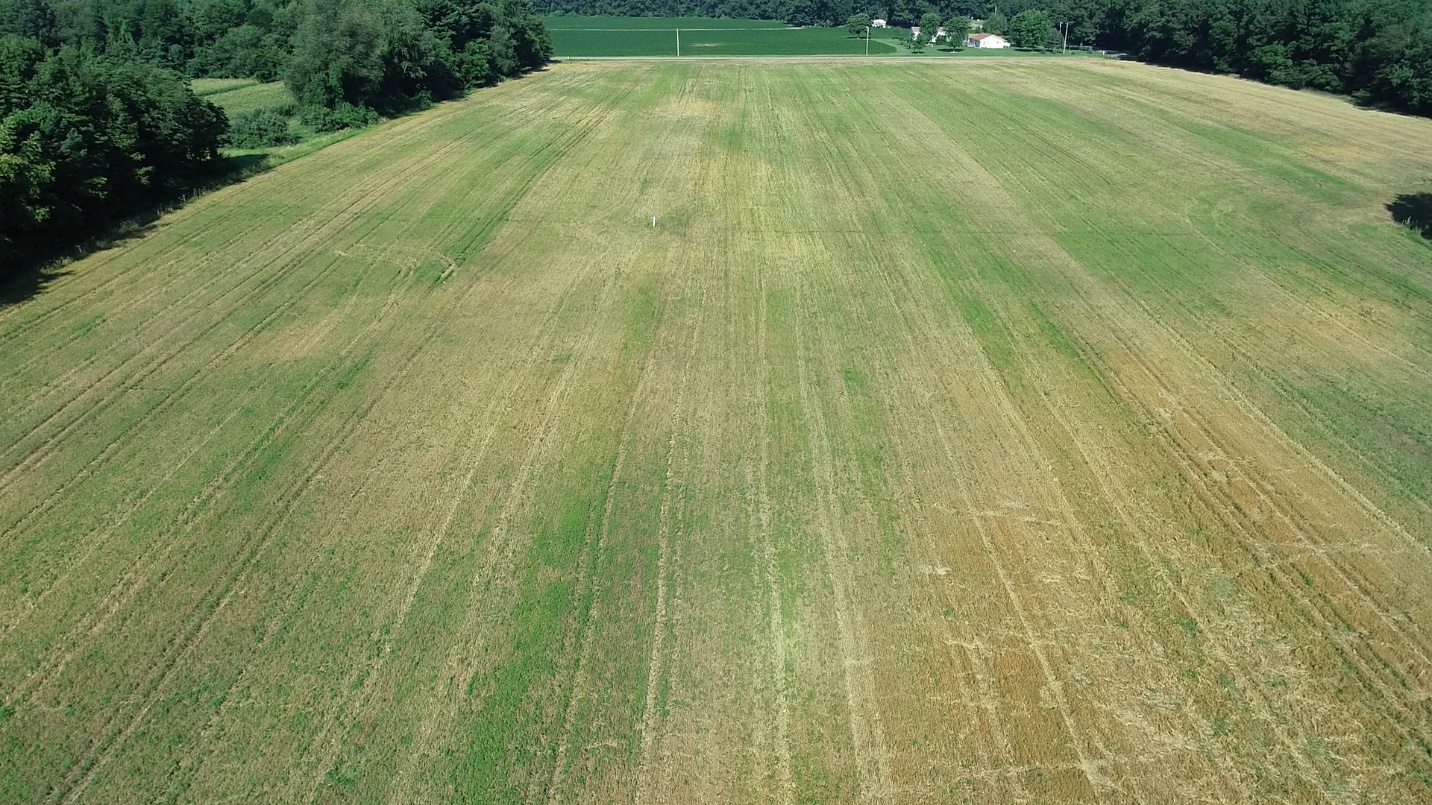
Insects. Western bean cutworm (WBC) moth trap counts held steady from last week in the region. Trap counts in Indiana increased last week in St. Joseph, Marshall, LaPorte and Pulaski counties, but numbers weren’t “explosive.” Begin scouting in the upper canopy for egg masses by keeping the sun on the opposite side of leaves (helps if you’re short) which makes the silhouette of the masses easier to see. MSU Extension field crop entomologist Chris DiFonzo created a handy two-pager for identifying WBC egg masses compared with other species. Eggs will hatch in about a week when larvae will first feed on their own egg casings before feeding on pollen packets that have fallen onto leaves. As they progress through instar stages, they will eventually make their way to the ear and bore in, making control with an insecticide essentially impossible.
|
Moth captures for WBC in southwest Michigan. |
|||
|
5-Jul |
12-Jul |
19-Jul |
|
|
WBC1 |
1 |
12 |
7 |
|
WBC2 |
1 |
25 |
16 |
|
WBC3 |
0 |
6 |
4 |
|
WBC4 |
2 |
33 |
32 |
|
WBC5 |
10 |
109 |
114 |
|
WBC6 |
2 |
23 |
24 |
The first fall armyworm moth was captured in a single trap. Potato leafhopper begin impacting alfalfa around this time with the characteristic “hopper burn” yellowing of leaf tips. Impact of this pest is increased in hot and dry weather. No spider mites have been reported in our region yet, and if the rainfall prediction is accurate, we shouldn’t need to be concerned in the near-term as this pest is problematic under hot and dry conditions.
Irrigation
Corn in essentially all fields has a Kc of 1.2 and will require 1.5-1.8 inches this week. Soybeans at R2 (full bloom, Kc=1.1) will use 1.4-1.6 inches, and early fields that reach R3 (beginning pod, Kc=1.2) will use 1.5-1.8 inches.
Field Crops Virtual Breakfast
This week’s MSU Extension Field Crops Virtual Breakfast featured an extended Q&A with numerous field crop specialists on a wide variety of topics. Next week’s session will focus on Bugs and More Bugs with Chris DiFonzo.
If you were not able to join the session, the recordings will be closed-captioned and available at the Field Crops Virtual Breakfast webpage and the MSU Extension Field Crops Team social media platforms: Facebook, Spotify, YouTube, Apple Podcasts and Twitter.



 Print
Print Email
Email




